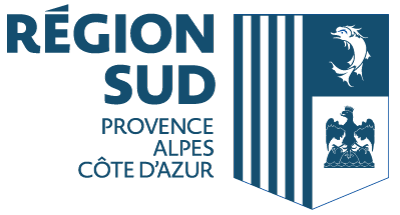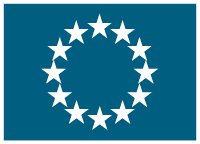Restoring semi-natural habitat types to a total cover of site Helnæs
(TOTAL COVER HELNÃS)
Date du début: 1 janv. 2010,
Date de fin: 1 janv. 2014
PROJET
TERMINÉ
Background
A national assessment of the conservation status of habitat types and species covered by the Habitats Directive was made in Denmark that identified key threats to semi-natural habitat types listed in Annex I. These were: overgrowth with trees and shrubs; fragmentation; and desiccation of wetland habitat types. In the planning process to develop management plans and action plans for all Natura 2000 sites, it was recommended that priority should be awarded to restoration of species and habitat types whose conservation status was in danger of further deterioration during the first planning period (2010-2015).
Objectives
Up five habitats of national importance and in danger of deterioration were covered by this project. The project area had the potential to develop into a continuum of Annex I habitat types and habitats for Annex II species that were rarely seen in Denmark. Actions focused on the Helnæs peninsular of Funen. It contains a former marine bay, now drained for agricultural purposes, but partly restored with some salt meadows, fens, dry grasslands and meadows, and a hilly terrain, Bobakkerne, with dry grasslands and salt meadows. Work at this site aimed to restore (and maintain at a favourable conservation status) Danish areas of semi-natural habitats, which had been evaluated as being a priority for mitigation efforts. The main objective was to ensure proper conditions in the terrestrial area of the site for the existing habitat types and then orchid Liparis loeselii habitat, so that they could develop as a mosaic across the site and be restored to a favourable conservation status in the near future. The project also intended to improve habitats for Triturus cristatus and Bufo calamita, as well as create new habitats for these amphibian species.
Results
Project outcomes completed all of the planned activities. Development of habitats 1330, 6210, 6230, 6410, and 7230 in the Natura 2000 site has been secured on an additional area of nearly 70 ha (from 66 ha to 135 ha). The habitat for Liparis loeselii has been increased from 1 ha to 8-10 ha. Water surface was increased on 60 ha and this had an immediate positive effect, significantly increasing the size of bird populations in the area. The structure of vegetation has changed in the areas that were cleared and these plots are now being grazed as a result of the project.
The secondary objective was to improve existing, and create new, habitats for Triturus cristatus and Bufo calamita. During the project 23 ponds were established (15 foreseen) and the population of Bufo calamita was strengthened by releasing a large number of small Bufo calamita during August.
Restoration in numbers:
Purchase of land: 75 ha of 84 ha foreseen, long-term agreements on the rest;
Restoration of hydrology: 60 ha of 60 ha foreseen at Helnæs Made; and
Clearing of trees, bushes and alien species (Rosa rugosa): 21 ha achieved of 15 ha foreseen.
Fencing: in total 30 km of fence has been put up or restored, 20 km foreseen;
Grazing: 240 ha are being grazed of 201 ha foreseen + 5 specimen of cattle were bought to secure a sufficient grazing.
Restoration / creation of ponds: 23 ponds of 15 ponds foreseen were established + population of Bufo calamita strengthened.These results ensured that the project secured connectivity between terrestrial areas in the site and thus the species targeted by the project are secured by the habitat restoration work. Overall the total area of previously threatened and vulnerable habitats has been doubled, with the suitable areas for Liparis loeselii increasing by a factor of five.
In relation to the Water Framework Directive, the nitrogen output into Lillebælt has decreased by approximately 6 tonnes/year. CO2 emissions from the Helnæs Made area have stopped due to raising of the water level. The increase of water might even increase the formation of peat in the area and thus function as a CO2 sink.
Other project benefits included the preparation of Management guidelines for Liparis loeselii that were developed together with Aarhus University. These are completely new as no guidelines existed before. A lot of knowledge and know-how has been collated within the management guidelines. Such information is to be used during future management of the Liparis loeselii areas at Helnæs and also in other areas (e.g. sites covered by LIFE11 NAT/DK/000894 RARE NATURE).
Socio-economic impacts relate to increased appreciation about the use of different agricultural subsidies to help sustain long-term management of nature conservation areas and habitats. The LIFE project also made it possible to establish five larger grazing units in the area to secure more economically viable grazing management systems. Robust cattle (such as Highland cattle) were shown to further boost the cost-effectiveness of grazing, particularly during winter months. This encouraged new cooperation between the nature conservation authorities and Highland cattle breeders, which is expected to increase opportunities for on-going grazing of the project areas.
Green tourism benefits have also been safeguarded by conserving the siteâs habitats, which are among the most popular visitor areas on western Funen.
Two conference centres (Gl. Brydegaard and Gl. Avernæs) use the project areas in their marketing. It expected that they will focus on health, local production, and nature experiences in the future in which the Helnæs area can play a major part.
Further information on the project can be found in the project's layman report and After-LIFE Conservation Plan (see "Read more" section).
Accédez au prémier réseau pour la cooperation européenne
Se connecter
ou
Créer un compte
Pour accéder à toutes les informations disponibles
Coordinateur
- Annita SVENDSEN
- (Denmark)




